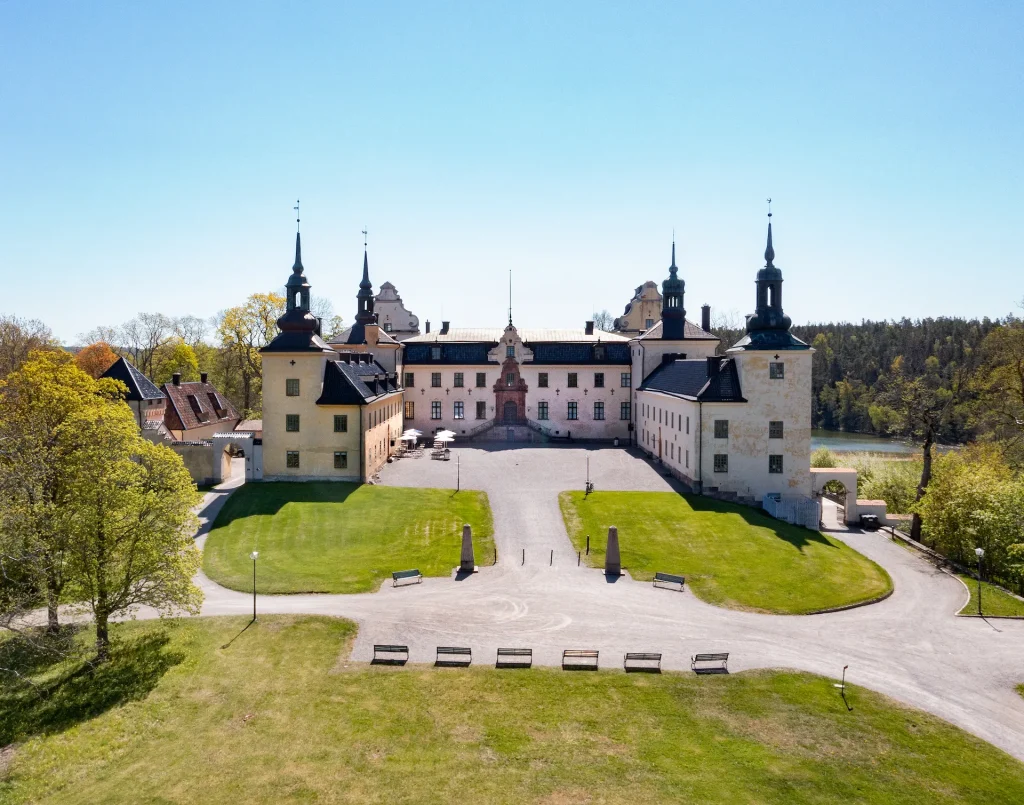Tyresö Palace
Tyresö Palace and park tells the story of life around a palace at the turn of the 20th century, in an English-style park and Mediterranean-inspired garden. It’s beautifully situated on the shimmering shore of Kalvfjärden, south of Stockholm.
Join a guided tour during the summer months (tours start again late spring 2025), or discover the buildings and grounds on your own year-round. There’s plenty to do when you come to visit.
- Explore the island of Notholmen.
- Witness the changing seasons in the lush English-style park – one of the first of its kind in Sweden.
- Have a picnic among oaks and apple trees and observe the changing seasons along winding paths.
- Enjoy a drink, meal or “fika” in one of the cafés or the restaurant.
- Go plant shopping in the plant nursery.
- Stay for the night at the charming hostel Lilla Tyresö.
- Experience a peaceful hike on a spiritual and historical nature trail, approximately 2.5 km long.
Please note that there is a ban on open fires and barbecue in Tyresö Palace and park.
The history of Tyresö Palace
Gabriel Oxenstierna, Councillor of the Realm, inherited the medieval Tyresö and built the present palace and Tyresö Church in the 1630s. In the 1770s the palace was modernized and an English park – the first of its kind in Sweden – was added.
Today the palace shows an environment from the years around 1900. Here in the natural beauty of Tyresö the last private owners, Claes and Caroline Lagergren, wanted to create a magnificent and comfortable home for themselves and their three sons.
Inspiration from the Mediterranean
The restoration, which was a romantic interpretation of the look of the seventeenth-century palace with certain additions, was undertaken by Isak Gustaf Clason, the architect of the main Nordiska museet on Djurgården in Stockholm. With inspiration from Italy, the garden was also renewed with pergolas, steps and terraces. The surroundings were embellished with the plantation of thuja, spruce pyramids, roses, peonies and fruit trees.

When is Tyresö Palace open?
During the summer, you can join a guided tour of the palace and learn more about the people who lived and worked here, from the 1630s to the 1930s.
Tours start again late spring 2025.
You’re welcome to come visit year-round and enjoy the garden, go on a hike and see the houses and service residences on the palace grounds.